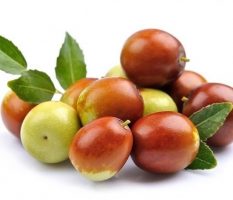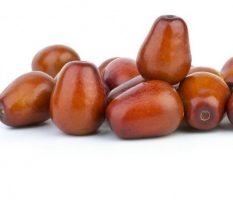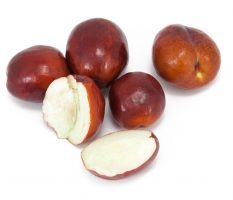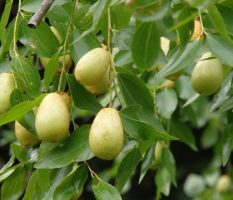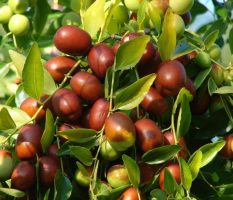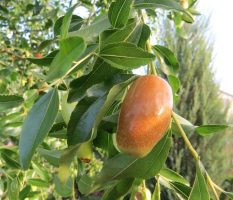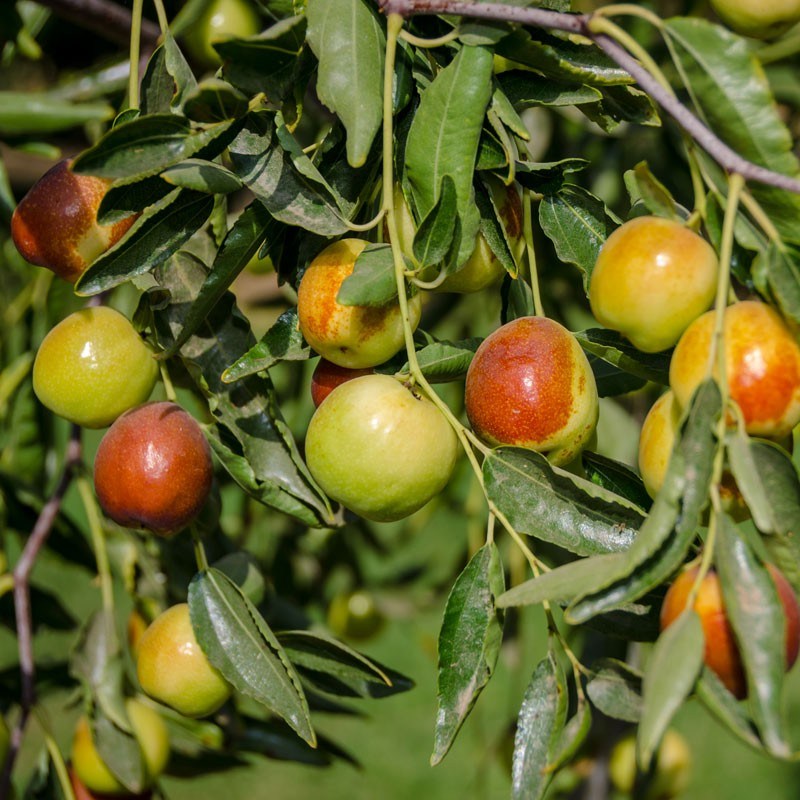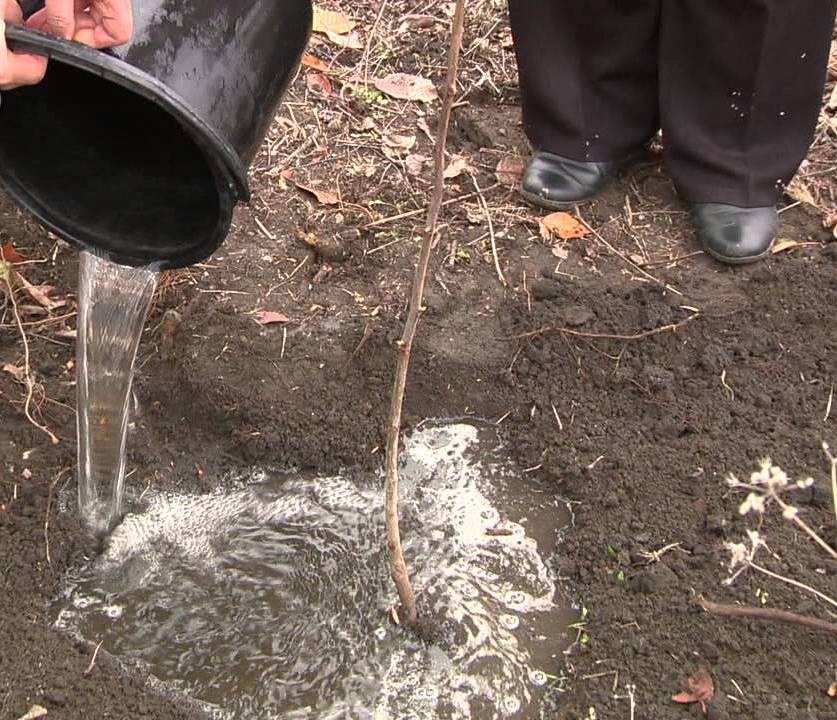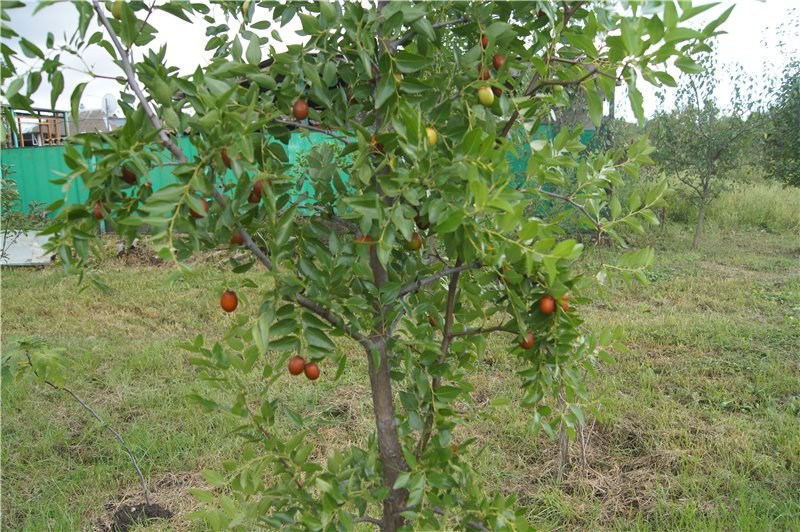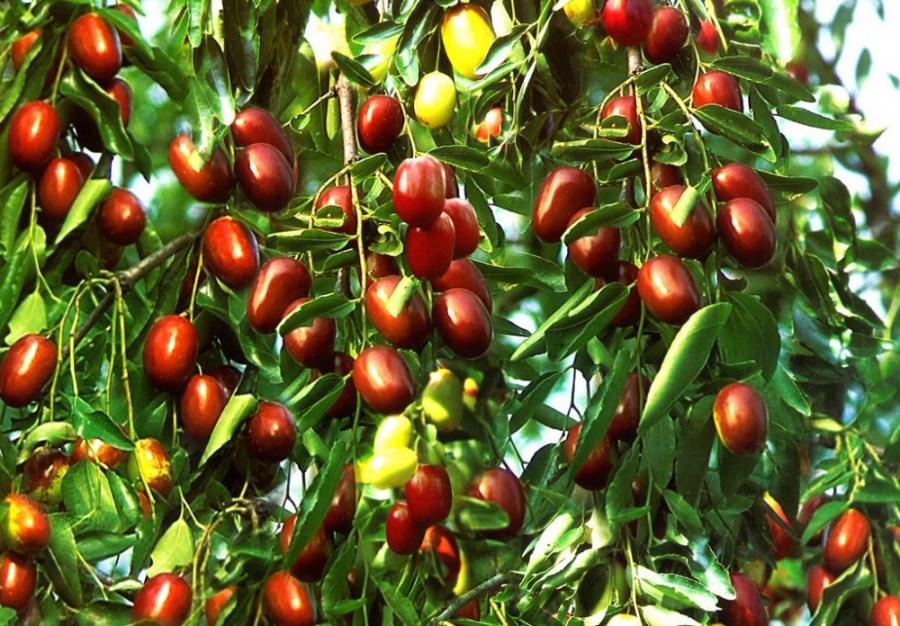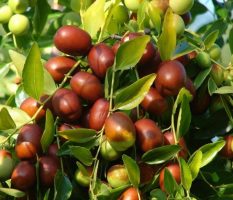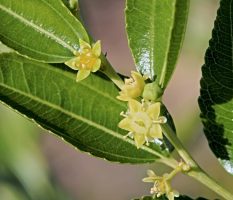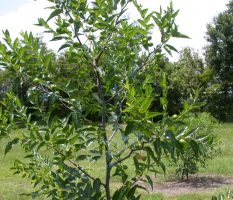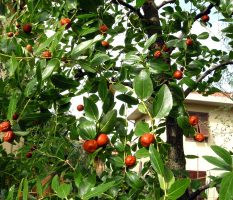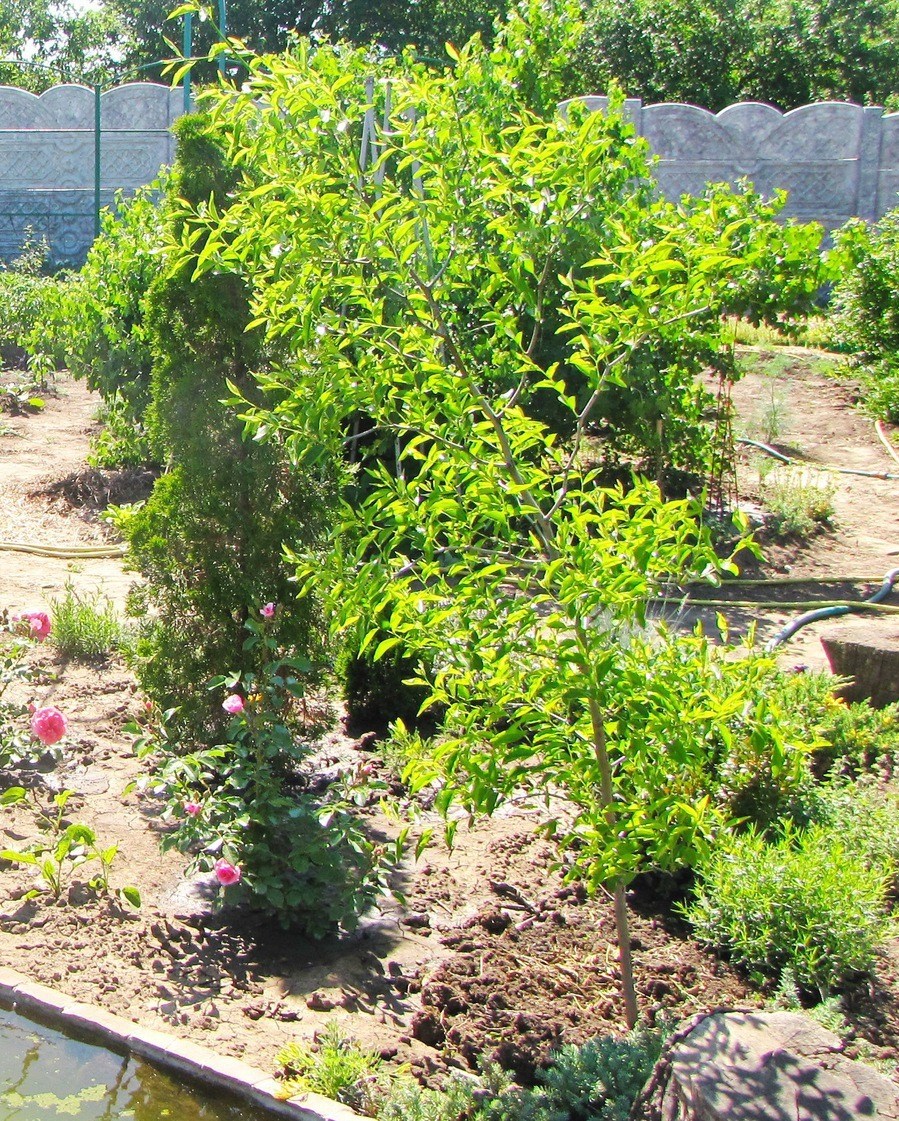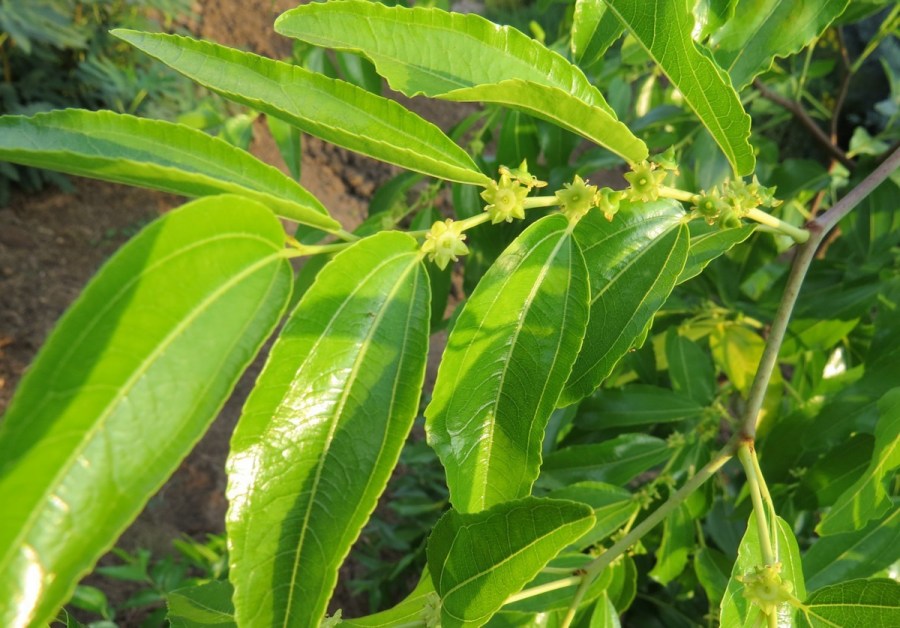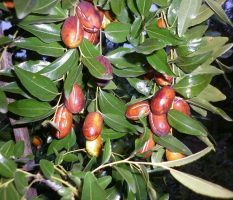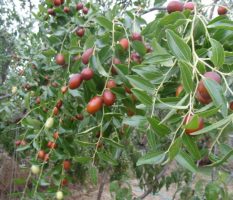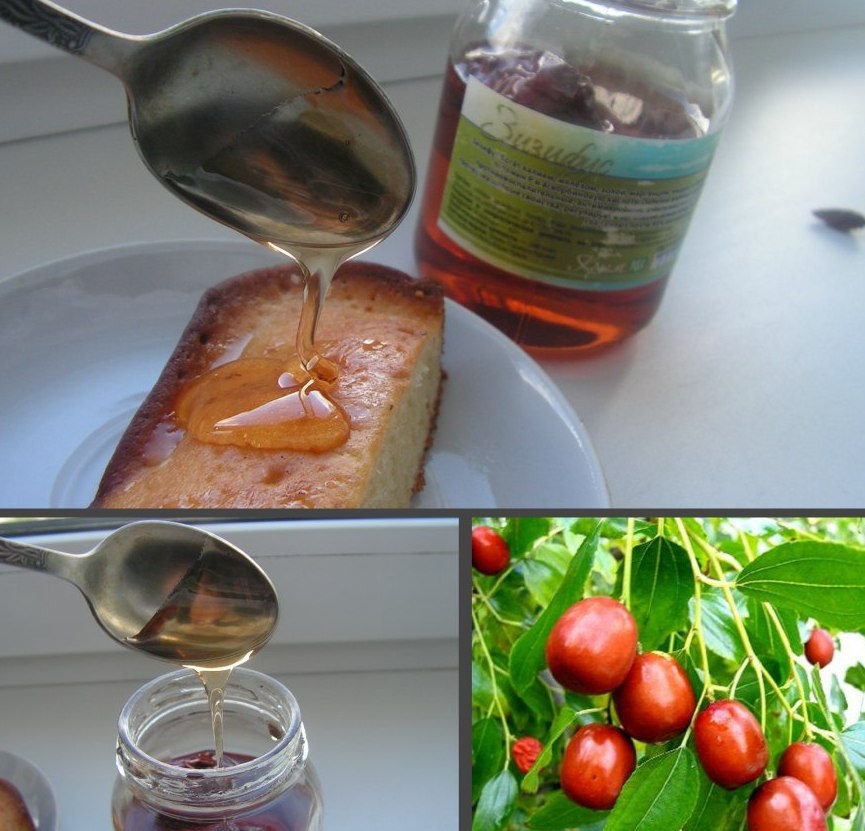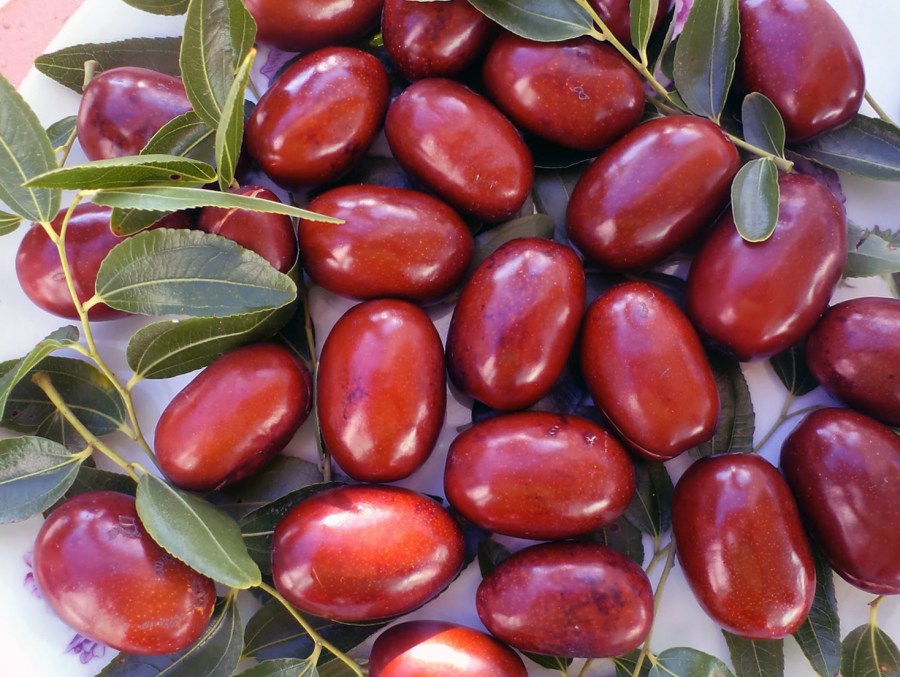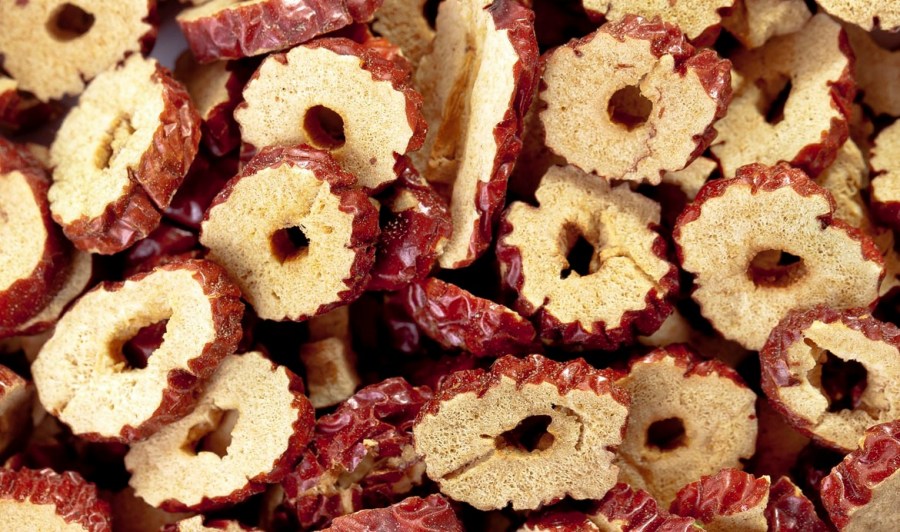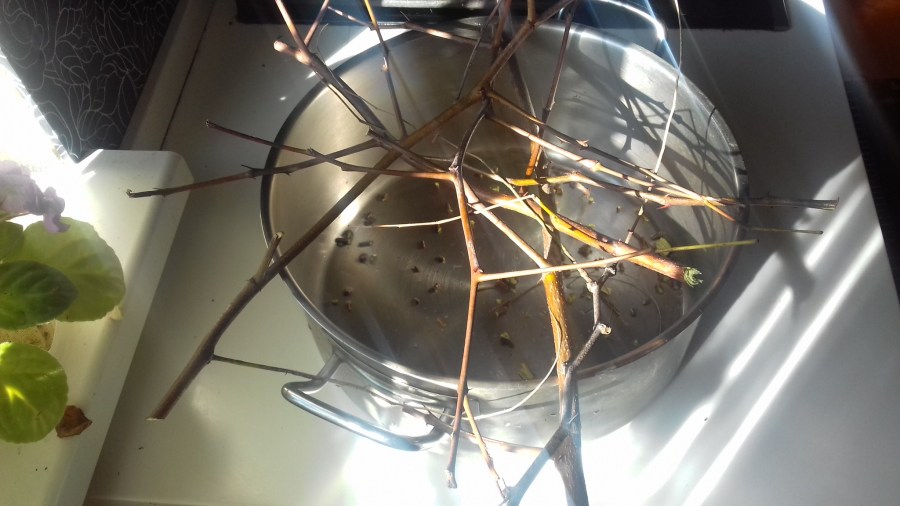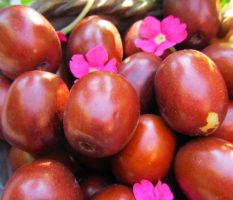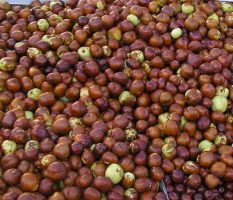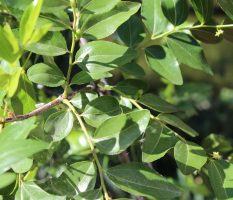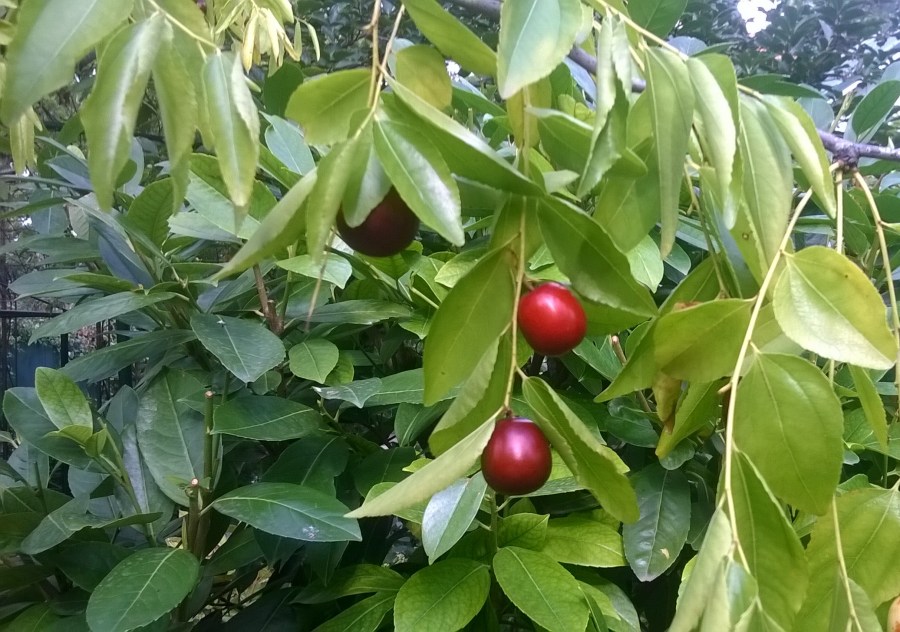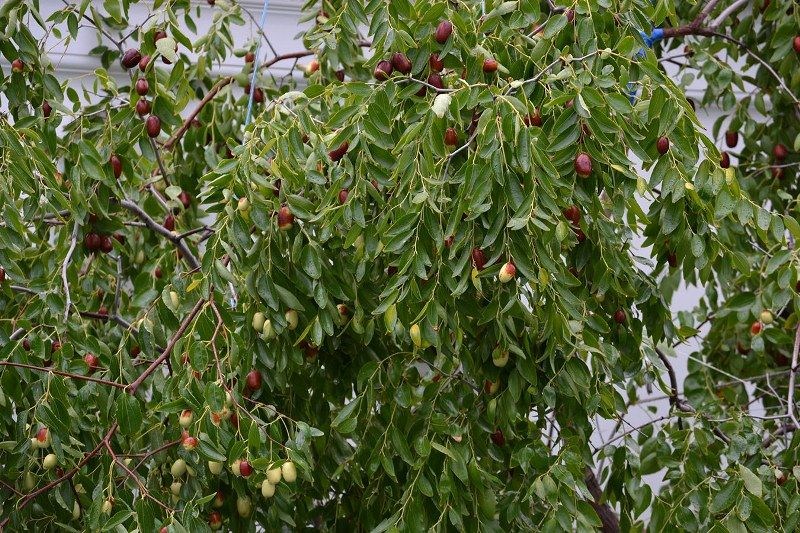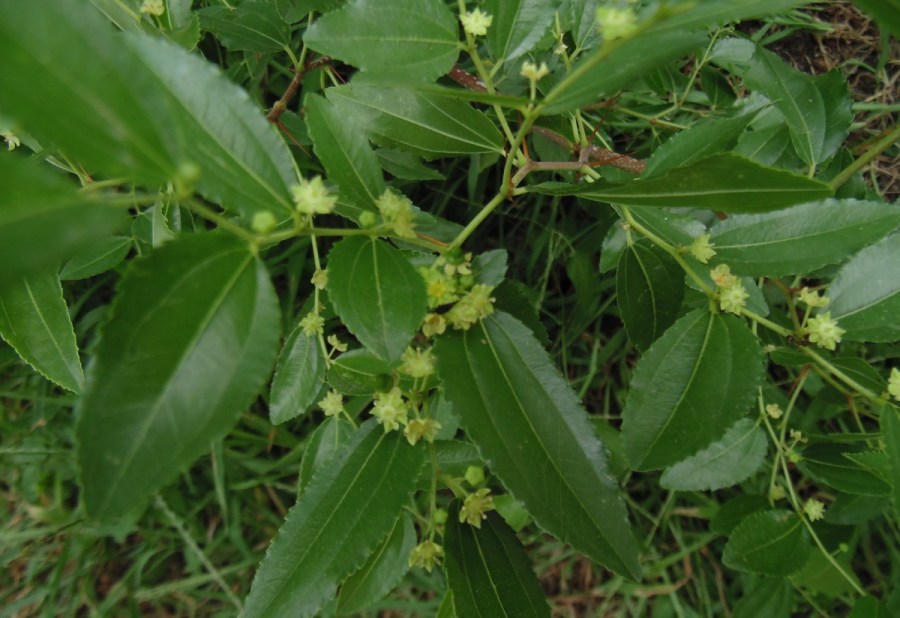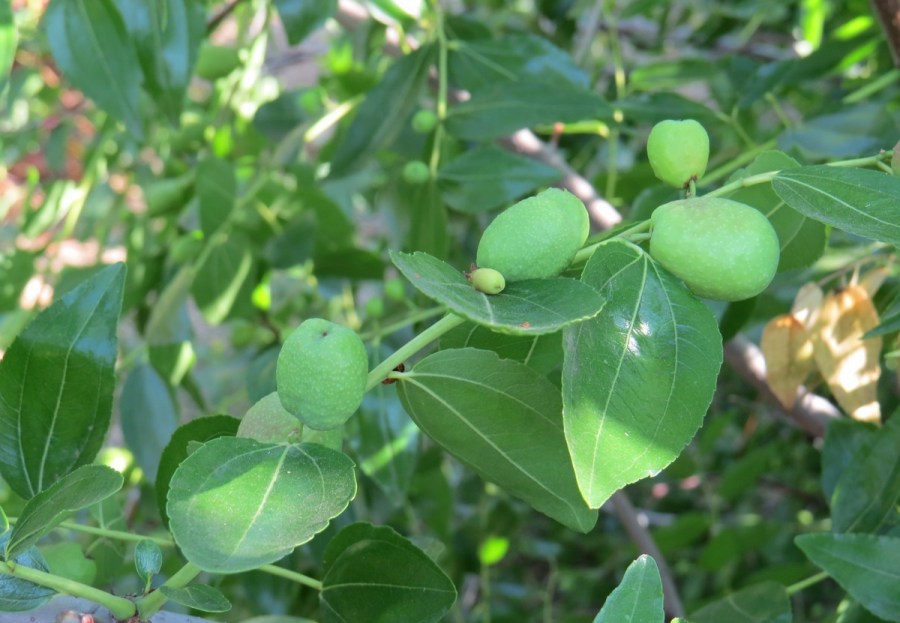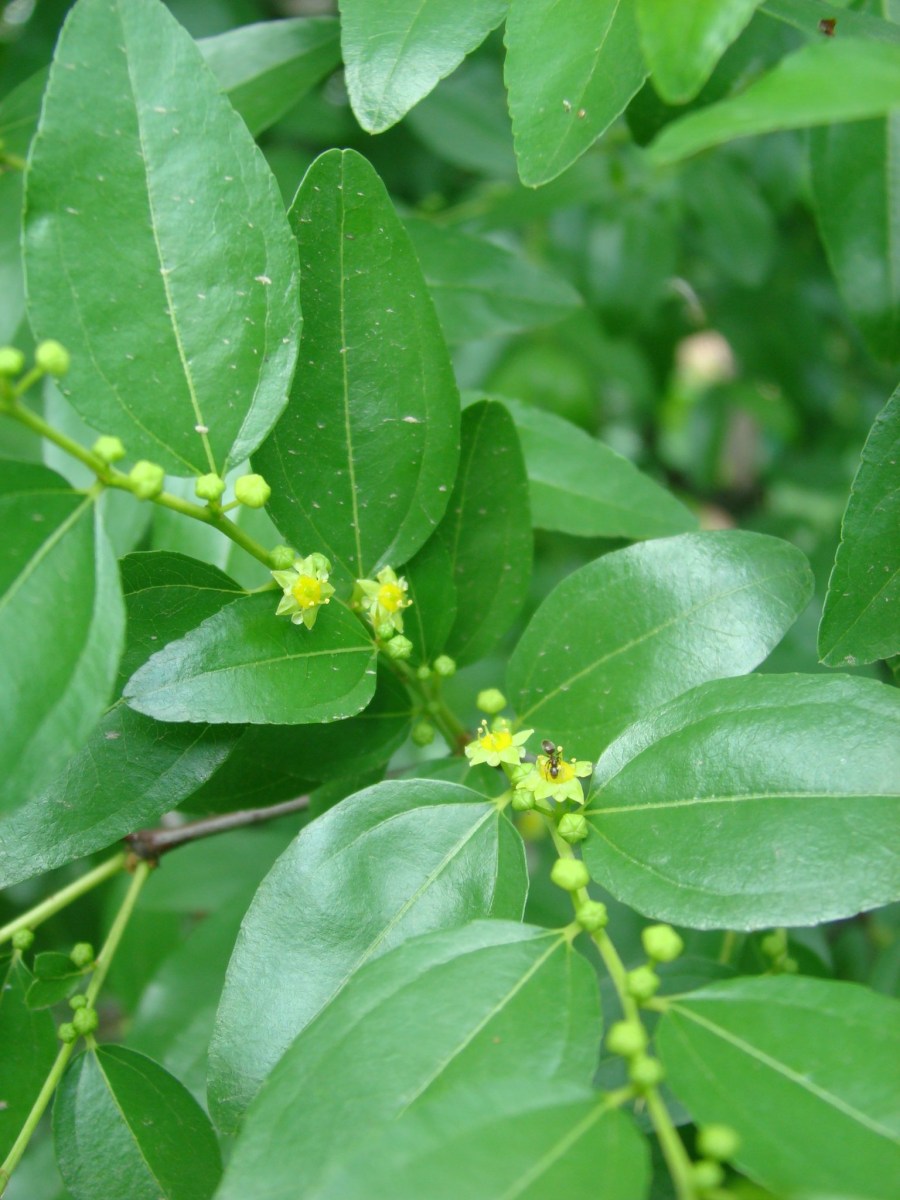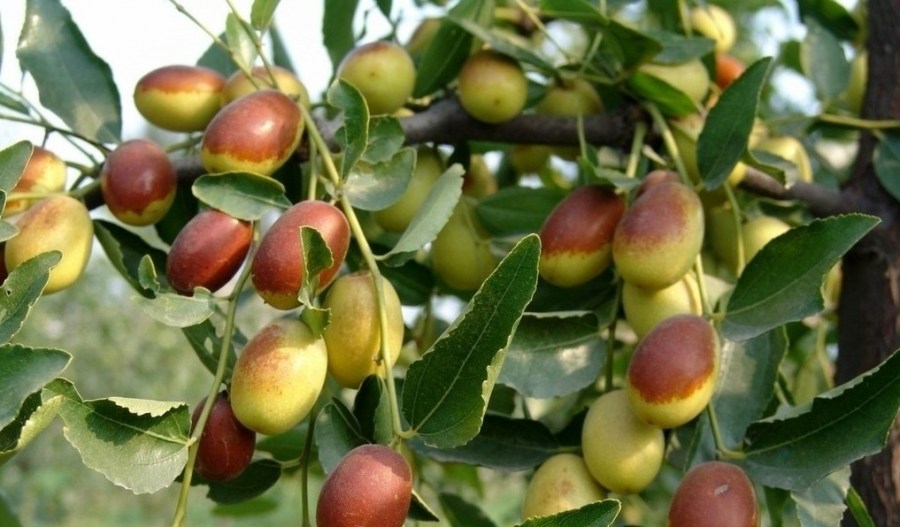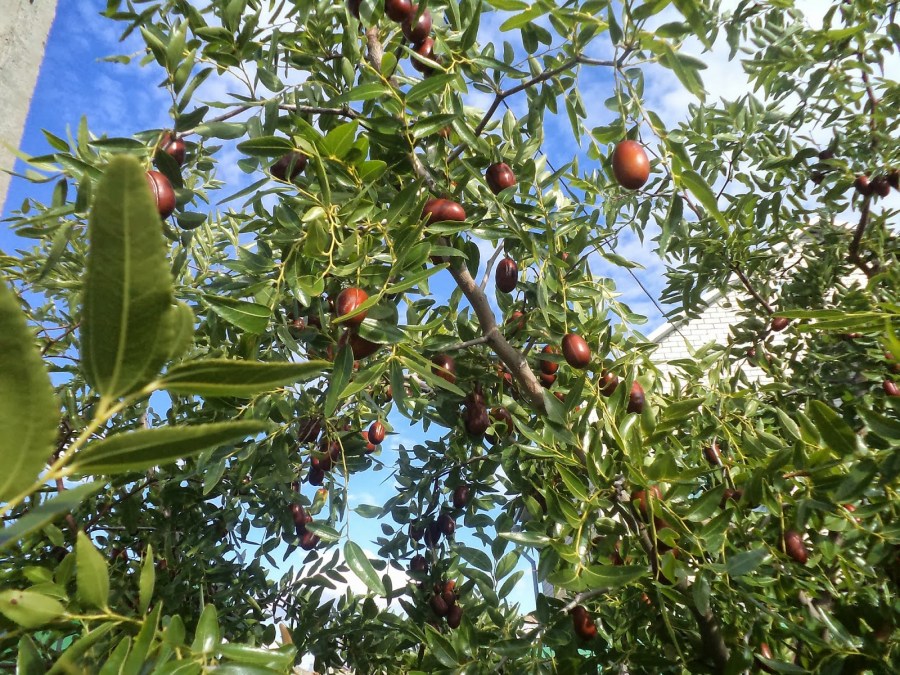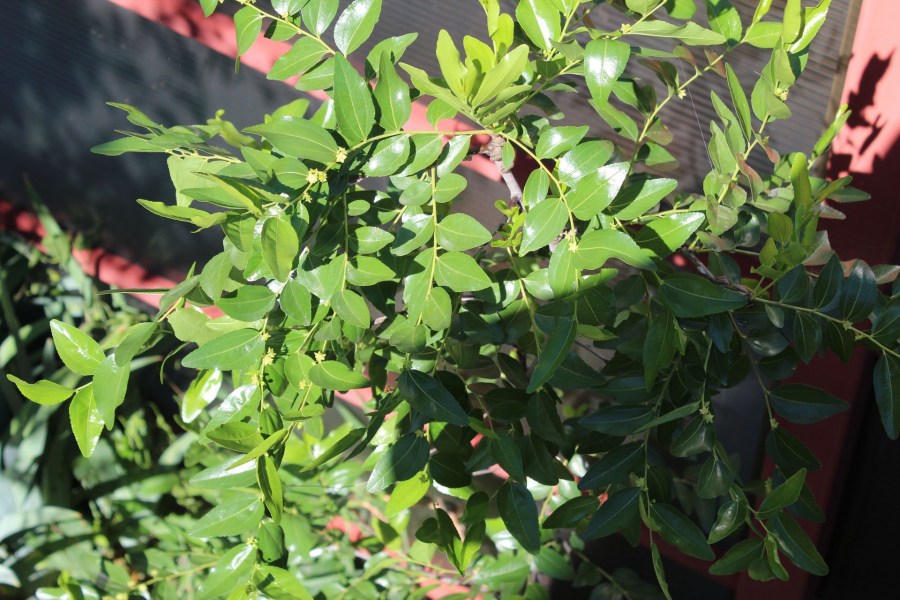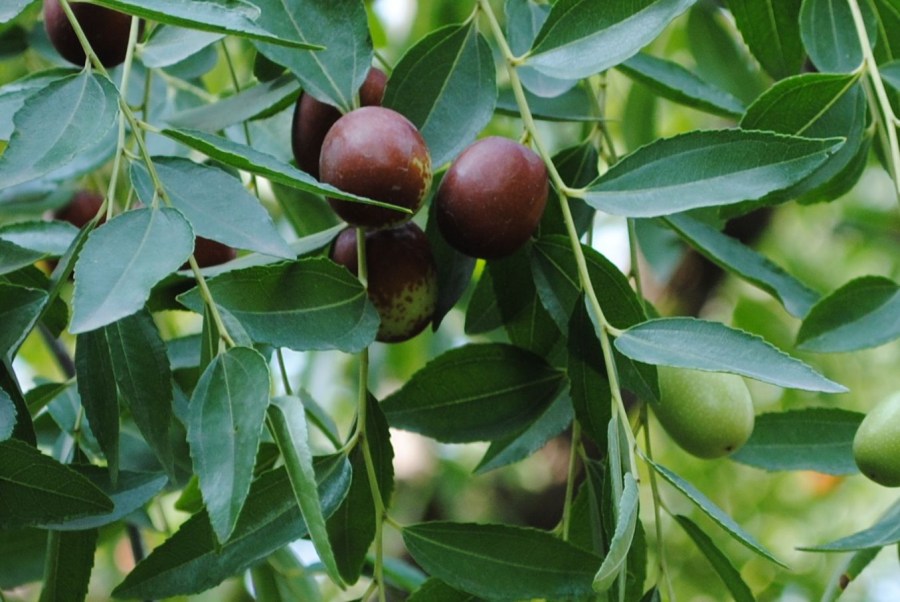Jujube - benefits and harms to humans. Detailed description of jujube fruits (dates) - 70 photos
Among domestic gardeners, jujube is still considered exotic. But in fact, this plant has been cultivated by man for more than 4 thousand years. In different countries it is called jujuba, unabi or a Chinese date because of the external similarity of the fruits (for the first time, looking at the photo of jujube can really be confused). Due to its versatility, it was loved by summer residents, landscape designers, culinary specialists and traditional healers.
Description
Manchuria and the territory of the modern Chinese province of Inner Mongolia are considered the birthplace. Nowadays it is found in almost all countries with a temperate climate. In Russia, jujube grows in the southern regions - in the North Caucasus, the Kuban, in the Crimea, but it can also be grown north.
The tree grows up to 5 meters tall, with a wide crown, bright green shiny leaves. The trunk is bare. Shoots are elastic, bent in shape, with smooth bark, there may be small spikes on the bend.
Ripe fruits are oblong, with a diameter of 1-2 cm, with a dense skin from light brown to burgundy and a large bone inside. The pulp is fleshy, of a dense consistency, sweet in taste, sometimes with a sour taste.
Varieties
In the world there are more than fifty varieties of jujube. In Russia, the most common breeding species, due to climatic conditions. The Koktebel and Sinit varieties bred in Crimea can be grown not only in the south, but also in the central black earth.
They are characterized by high fecundity and early ripening, the first crop can be harvested already in the second or third year after planting. The fruits are relatively large, sweet, with a characteristic acidity, used by the hostesses for making jams and preserves.
The varieties of work of Chinese breeders are also popular - I-Zao and Ta-Yan-Zao. They are easily recognized by small pear-shaped fruits and the complete absence of thorns on the branches.
Both are distinguished by a specific flesh of powdery consistency and astringent sweet taste. I-Zao has no seeds, which is why it is great for drying, but good and fresh. They are widely cultivated in the Far East in the regions bordering China.
The large-fruited Moldavian variety Mori Jer, which is characterized by early ripeness and excellent taste, is also noteworthy. It takes root well on the lands from the steppe Altai to Belgorod.
Landing Features
Planting and caring for jujube will not cause much trouble, but you need to consider that the plant is very demanding on the nutritional value and quality of the soil. Wet chernozems and loams are ideal in moderation. It is also necessary to choose a sunny place - in shady places unabi will not give the maximum yield.
To give the roots time to grow stronger, it is better to plant them in the early spring, and it is not recommended to do this in the fall - in this case, the roots will freeze and the plant may die, unless of course it is about frost-resistant varieties.
When choosing a place for planting, it should be provided that when the tree grows, its crown will be spreading. The plant itself must be given "personal space" with a diameter of one and a half meters.
Fertilizers are added to the dug pit, a compost heap or manure is suitable. Having placed a sapling in a hollow and covered with earth, it is necessary to carefully tamp and pour plenty of water.
Seedlings can be sprouted independently from the seeds, but it is preferable to purchase them in a specialized store.So there will be more guarantees for survival and less trouble, because the Chinese date is a cross-pollinated plant, and for better yield on the site should be trees of two or more varieties in close proximity to each other.
Care
If all the recommendations are observed during planting, growing jujube is not a concern. It calmly withstands any heat, and the varieties developed for our latitudes will endure severe frosts. Unabi is also very resistant to diseases and pests, which eliminates the need for regular chemical treatment.
It practically does not require additional watering, except at the stage of accelerated growth in the first years of life and during a significant drought. And he lives, by the way, for a very long time - almost a century.
After the winter, when it is important to restore nutrients, fertilizing with mineral fertilizers will not be superfluous. During the season, additional fertilizing is not required, subject to the timely removal of weeds that deplete the soil.
When the roots have strengthened, and the tree itself has strengthened (usually this is two or three years old), you can begin to form a crown to your liking. Periodic pruning carries not only a decorative, but also a sanitary function - removing excess branches will have a good effect on the fecundity and health of the shoots.
Harvesting
Depending on the variety, it begins to bear fruit in the third or fourth year of life, but under good growth conditions and proper courtship can give the first crop already in the second season. Reproductive age occurs on average at the tenth year.
Flowering later, so spring frosts, even in May, are not afraid of him. It lasts about two months and is accompanied by pleasant aromas. Honey plant attracts bees in huge quantities, which contribute to better pollination.
Breeding varieties bear fruit until late autumn and can produce an average of 30-60 kg per tree, large-fruited species under favorable conditions and fertilizer up to a centner.
If further processing is provided, they are harvested unripe, immediately after the green color begins to take on brown hues. Freshly consumed only fully ripened.
Application
It is used both fresh and processed - it is used for making candied fruits, preserves, pastils, jams. You can dry directly in the sun without additional preparation, it is stored in this form for a very long time.
The useful properties of jujube are due to its use in other areas, both fruits and bark with leaves.
In medicine
In the east, it is called the tree of youth, due to its ability to cleanse the body of toxins and slow down aging. From a scientific point of view, this is due to the fact that the fruits contain more ascorbic acid than any citrus fruit, which allows us to recommend unabi as a natural antioxidant, as well as a host of other vitamins, minerals and nutrients.
In large quantities there are also iodine, cobalt and iron, useful for hematopoiesis. Saponins, glycosides and rare acids are involved in the treatment of a number of ailments.
A decoction of the fruits soothes, is used as an adjuvant for stomatitis. It also improves lactation, which will appeal to young mothers, who during this period are forbidden a lot of goodies.
Leaves have antiseptic properties. It has been experimentally established that if a tooth hurts, it is enough to chew the leaves of a Chinese date, and the pain will subside. At least you will get to your dentist more comfortably.
Tea made from leaves has a sedative and relaxing effect, which can be useful for insomnia. Alcohol seed tincture showed itself well.
Despite all the healing properties, there are contraindications, like with any medicine. Therefore, before using concentrates, you should consult your doctor.
In cosmetology
The antibacterial properties of the leaves have been used in the treatment of acne, acne and inflammation on the skin of the face. To do this, an ointment is prepared on the basis of oil (usually olive), in which the leaves are placed and brought to a temperature of 80-90 degrees Celsius, and allowed to infuse for 10 days. Apply to problem areas 2-3 times a day for half an hour.
Decoctions and infusions due to all of the same properties have shown themselves well in the treatment of dandruff. Along the way, hair follicles are stimulated, blood circulation in the scalp improves, which improves the health and beauty of the hair. Jujuba concentrates are widely used by manufacturers in shampoos and hair care products.
Photo of jujube
Ideas for giving: 120 photos of the best modern design ideas
Rolled lawn: 90 photos of application in design and laying technology
Join the discussion:




